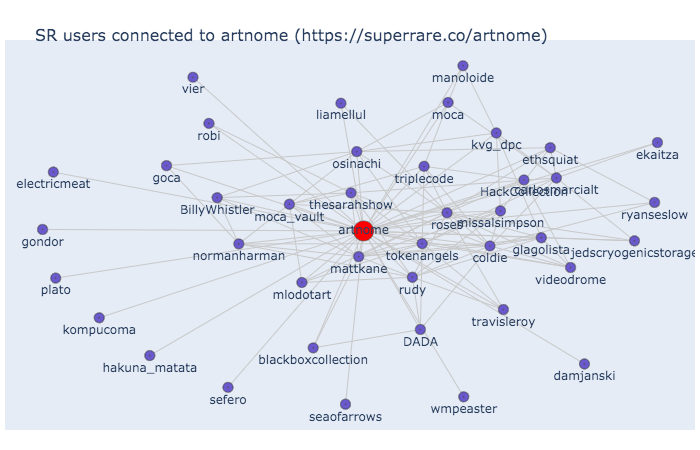Spirit Writing
2016 - Film & Video (Film & Video)
9:45 minutes
Chia-Wei Hsu
The final work in the Marshal Tie Jia series (of which Turtle Island is in the KADIST collection), Spirit Writing features the Marshal in conversation with Chia-Wei Hsu, by way of a ritual involving the Marshal’s divination chair. Marshal Tie Jia is a frog god, who was born in a pond in Jiangxi, China, before fleeing to Matsu Island off the coast of Taiwan during the Cultural Revolution after his temple was destroyed. Spirit Writing attempts to reconstruct the original temple using 3D modeling software, operated in real time as Hsu asks the Marshal questions, receiving answers through a divination ritual in which the chair is swung violently around by his acolytes. Despite its setting in a disembodied studio environment, Spirit Writing formally and ideologically considers the construction of locality, or environmental space. Such space transcends a physical geography: rather, Hsu seeks to find a resting, omni-locational residence for a refugee god. The difficulties Marshal encounters in communicating his ideal resting space propose locating religious, cultural memory alongside diasporic refugee memory, cast in disjointed violence side by side into a digital ontology. This is a deterritorialization that equally re-territorializes an idiosyncratic, potential topography for the current contemporary moment of migration, absurdity, violence, and potentiated digital utopia. Spirit Writing structurally differs from much of the other films in the Marshal Tie Jia series, in that it moves away from an emphasis on geological, physical locality, and instead proposes a transient virtuality for Mashal to evacuate to. In this way, Spirit Writing is a fitting coda to the series, marking a shift in Hsu’s practice, his works increasingly interested with digital ontologies and culture. By imbuing both “real” space and “digital” space with a divine appendix, it takes the series’ previous explorations of Taiwanese geopolitical tensions and moves toward the potential for open-ended migration, a messy visual paradox both reverent and absurd.
Embarking from myriad audio-visual narratives, Chia-Wei Hsu pursues imaginative interrogations of cultural contact and colonization in Asia, oftentimes amalgamating his primary narratives with non-human actors including technologies, animals, gods, environments, traditions, and material objects. Bringing these diverse subjects together results in a bumpy ontological bleed between them, forming the topography of a historical geography without a straightforward objective position. By reinterrogating what histories and relations coexist within a given locale, Hsu’s work manifests new imaginative potentialities for their revitalization, an uncertain, profound terrain throughout his films and installations. While his work has consistently probed regulatory systems including religion, science, architecture, and military action, Hsu’s work has increasingly explored digital ontologies and the Internet of Things, in which previously luddite household objects have become connected to the internet. The digital, as a territorializing field produced by components largely manufactured in Asia, allows Hsu to attempt the detournement of western knowledge-bases to formulate new, imaginative archipelagos.
Colors:
Related works sharing similar palette

© » ARTS EQUATOR
The working processes of artists: Tim De Cotta | ArtsEquator Thinking and Talking about Arts and Culture in Southeast Asia Articles Courtesy of Tim De Cotta October 18, 2019 In this video, LASALLE students Nicole Kessler and Marian Saturno speak to musician Tim De Cotta on his (many) musical influences, how he talks about social issues through music and how to keep your art pure...

© » SLASH PARIS
Natalia Jaime-Cortez — Hier j’ai vu une baleine dans la Seine — Espace d’art contemporain Camille Lambert — Exhibition — Slash Paris Login Newsletter Twitter Facebook Natalia Jaime-Cortez — Hier j’ai vu une baleine dans la Seine — Espace d’art contemporain Camille Lambert — Exhibition — Slash Paris English Français Home Events Artists Venues Magazine Videos Back Previous Next Natalia Jaime-Cortez — Hier j’ai vu une baleine dans la Seine Exhibition Drawing, installation, mixed media Hier j’ai vu une baleine dans la Seine 2023 Natalia Jaime-Cortez Natalia Jaime-Cortez Hier j’ai vu une baleine dans la Seine Ends in about 2 months: February 3 → March 30, 2024 Le travail de Natalia Jaime-Cortez se déploie, ou plutôt se déplie, et relève d’un engagement corporel de l’artiste dont les papiers suspendus viennent dessiner des lignes dans l’espace...

© » DAZED DIGITAL
Usher’s Super Bowl look marks the arrival of bulking season | Dazed â¬…ï¸ Left Arrow *ï¸âƒ£ Asterisk â Star Option Sliders âœ‰ï¸ Mail Exit Fashion News The R&B superstar hit the stage in custom Off-White muscles, continuing a trend that’s been popping up on the AW24 catwalks 12 February 2024 Text Elliot Hoste Stock up on protein powder and renew that PureGym membership, people, because bulking season is back in fashion...

© » KADIST
Jordan Kantor
2008Lens Flare and the series Untitled Basel Lens Flare (6168, 5950, 7497) were part of a solo project by the artist presented at ArtBasel in 2009...

© » KADIST
Zarouhie Abdalian, Rocky Cajigan, Jesse Chun, Nikita Gale, Shilpa Gupta, Baseera Khan, Tarik Kiswanson, Alexis Smith, and Cecilia Vicuña Be here, or even better, be nowhere brings together artists who employ sculpture, drawing, video, and sound to probe social and historical structures and infrastructures, such as migration, colonialism, carceral systems, and space militarization...

© » HYPERALLERGIC
Two Pratt Graduate Programs Moving to Brooklyn Navy Yard Skip to content A view of Dock 72 with construction cranes in the background (photo by Rhea Nayyar/ Hyperallergic ) Two of Pratt Institute’s graduate programs are decamping from the Pfizer building in Bedford-Stuyvesant for a bayside view and expanded facilities at the Brooklyn Navy Yard later this year...

© » BROOKLYN STREET ART
Neon Saltwater Drenched a Gas Station in Neon Las Vegas; “Cherry Lake” | Brooklyn Street Art BROOKLYN STREET ART LOVES YOU MORE EVERY DAY Seattle-based digital artist and color virtuoso Abigail Dougherty, known in the art world as Neon Saltwater, recently unveiled her latest installation in Downtown Las Vegas, an eye-popping spectacle you can appreciate in the images here...

© » SLASH PARIS
Natalia Jaime-Cortez — Hier j’ai vu une baleine dans la Seine — Espace d’art contemporain Camille Lambert — Exposition — Slash Paris Connexion Newsletter Twitter Facebook Natalia Jaime-Cortez — Hier j’ai vu une baleine dans la Seine — Espace d’art contemporain Camille Lambert — Exposition — Slash Paris Français English Accueil Événements Artistes Lieux Magazine Vidéos Retour Précédent Suivant Natalia Jaime-Cortez — Hier j’ai vu une baleine dans la Seine Exposition Dessin, installations, techniques mixtes Hier j’ai vu une baleine dans la Seine 2023 Natalia Jaime-Cortez Natalia Jaime-Cortez Hier j’ai vu une baleine dans la Seine Encore environ 2 mois : 3 février → 30 mars 2024 Le travail de Natalia Jaime-Cortez se déploie, ou plutôt se déplie, et relève d’un engagement corporel de l’artiste dont les papiers suspendus viennent dessiner des lignes dans l’espace...

© » KADIST
Pratchaya Phinthong
2018Untitled (Ring) consists of two prominent elements contained in water filled glass sphere...

© » FRANCE24
Berlin Bad Boy Artist Jonathan Meese: 'I'm the sweet boy of art!' - arts24 Skip to main content Berlin Bad Boy Artist Jonathan Meese: 'I'm the sweet boy of art!' Issued on: 31/08/2023 - 16:57 11:45 ENCORE! © FRANCE 24 By: Marion CHAVAL | Magali FAURE | Eve JACKSON Follow | Yinka OYETADE | Loïc CHALAVON It's back-to-school time here in France, which means a whole new season of cultural gems to look out for...

© » SFMOMA OPENSPACE
What’s an Amateur, Anyway? : Open Space November 17, 2021 What’s an Amateur, Anyway? by Poetry Collaborations with Creative Growth Eds note: The prose in this post was written by Creative Growth Poet-in-Residence Lorraine Lupo Heather Edgar, Untitled, 18″x24″ acrylic on paper I like to proselytize to any non-poet who will listen...









